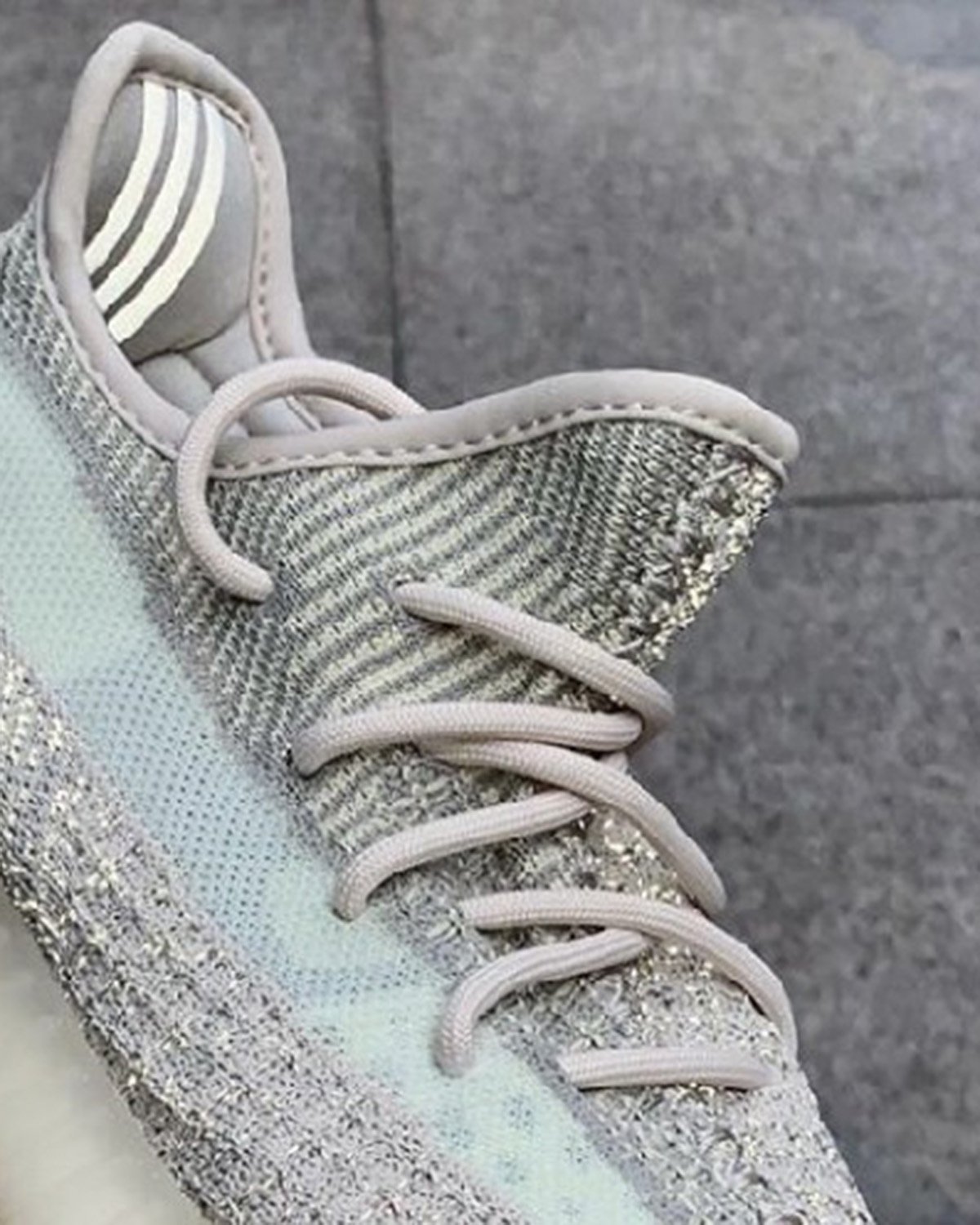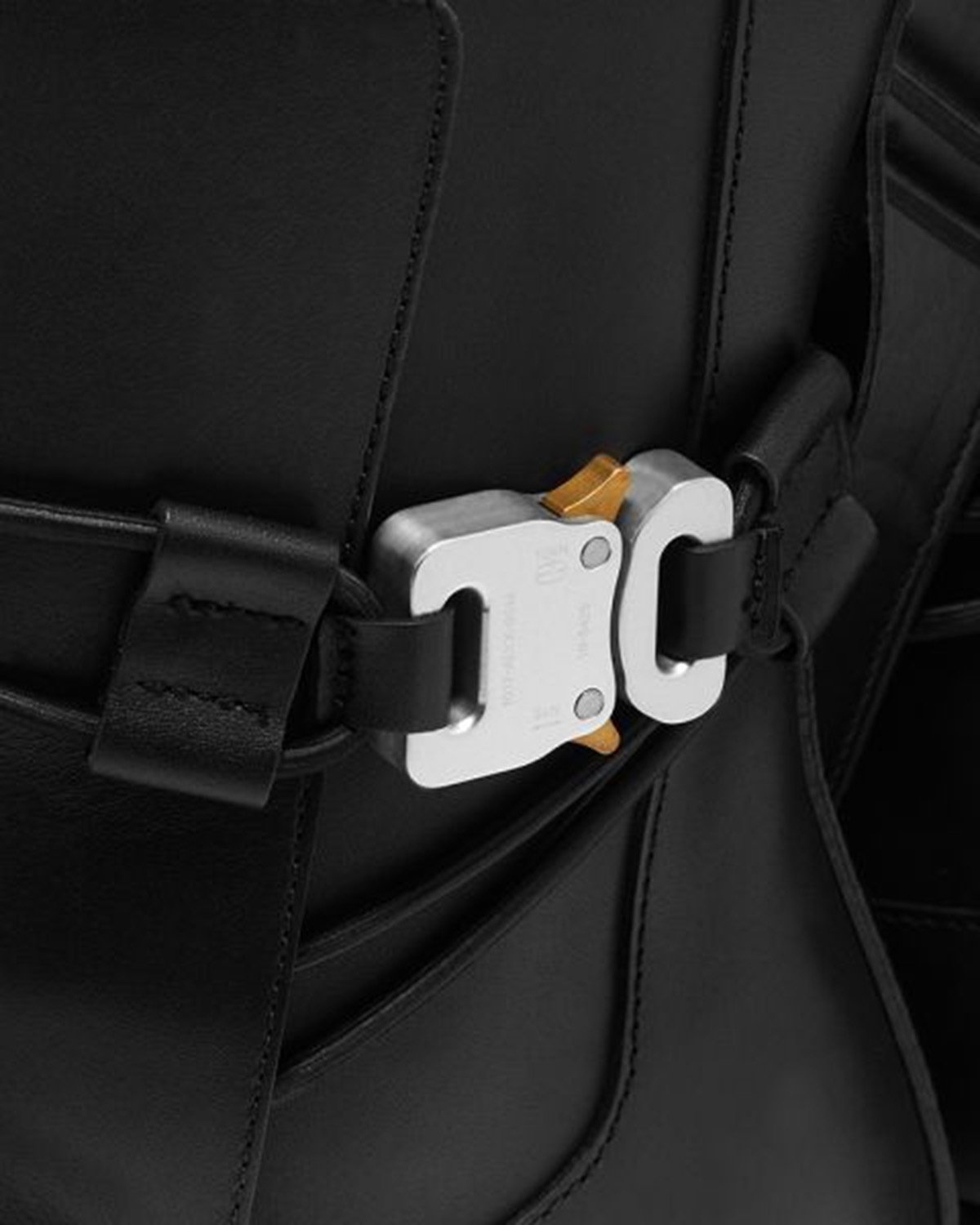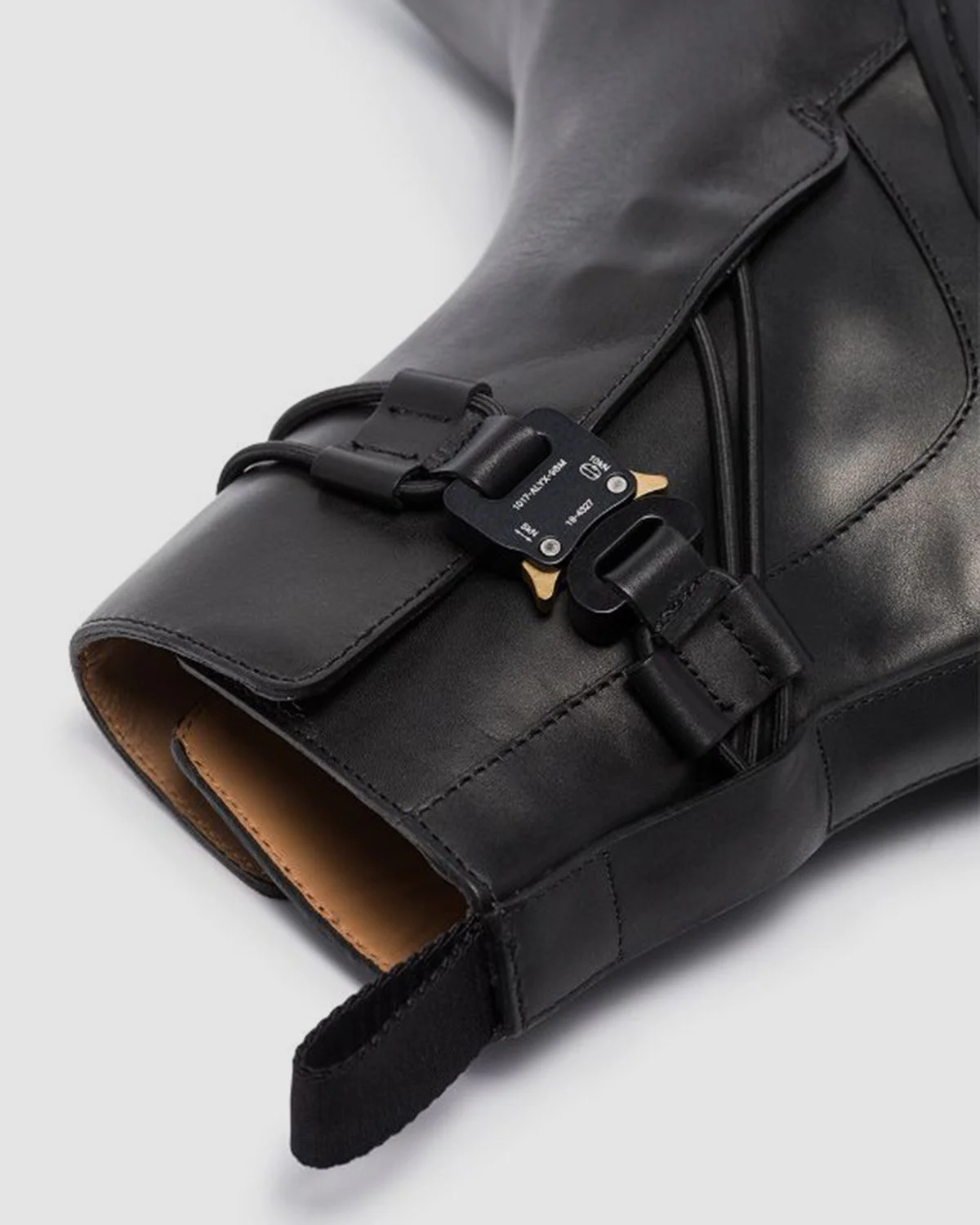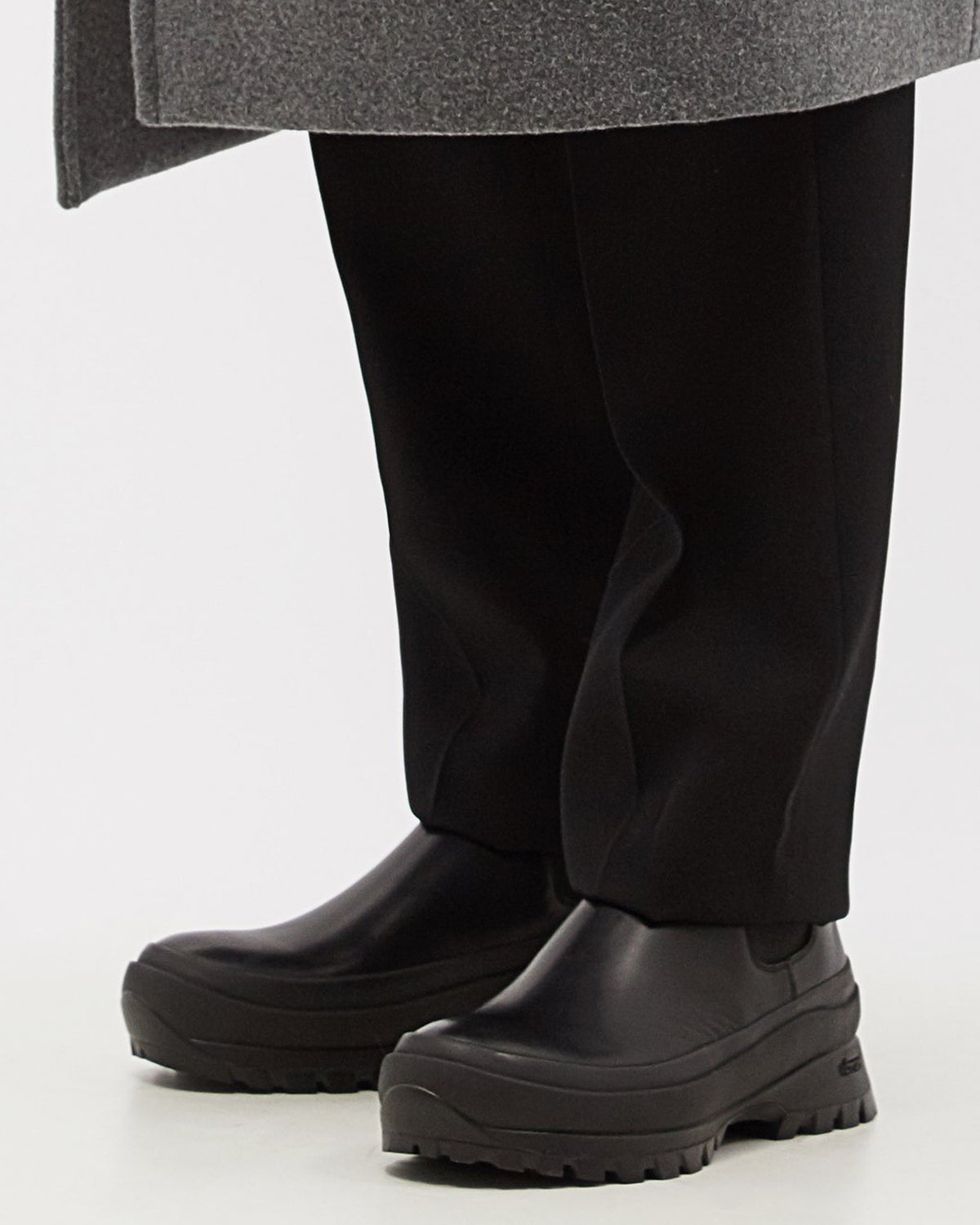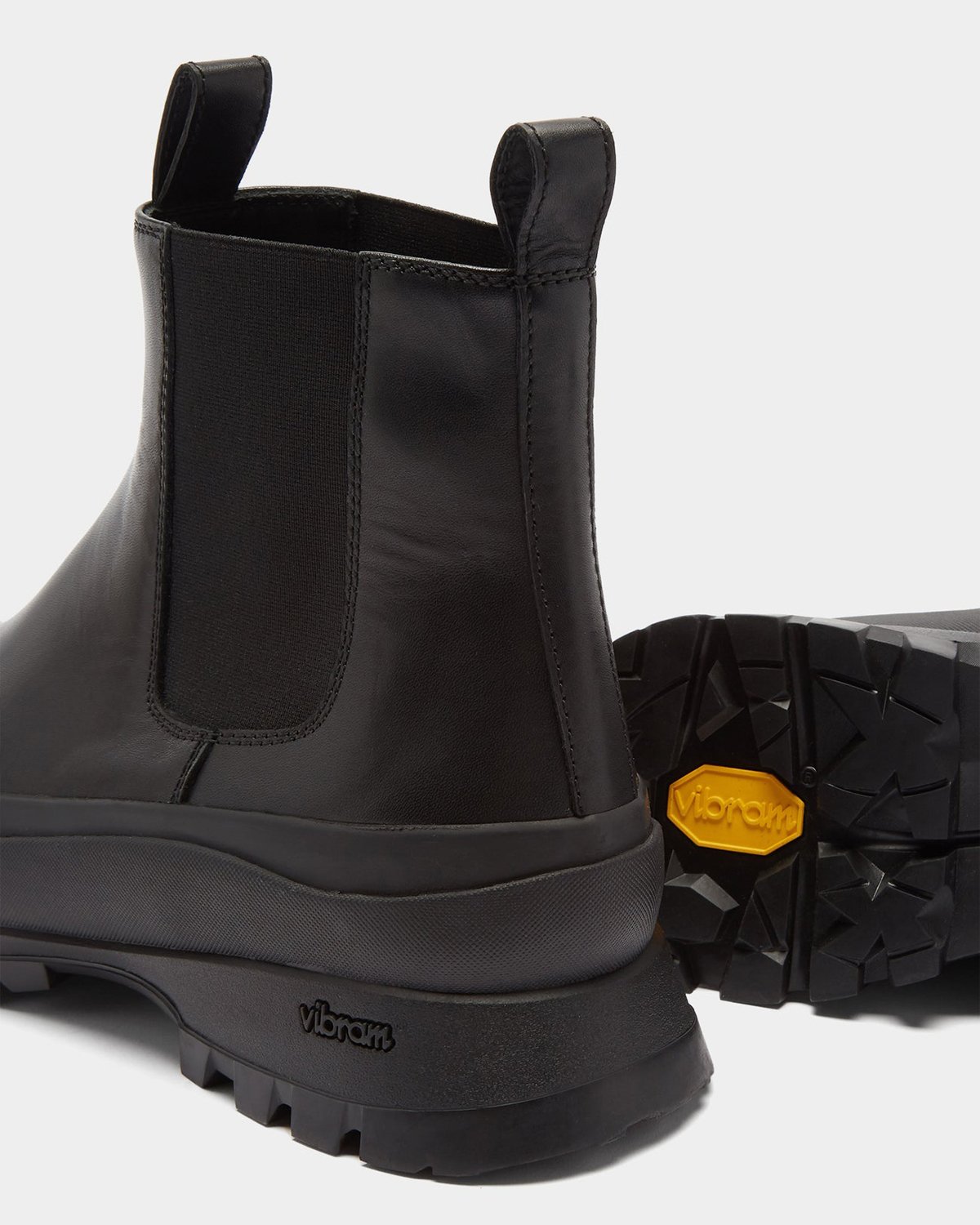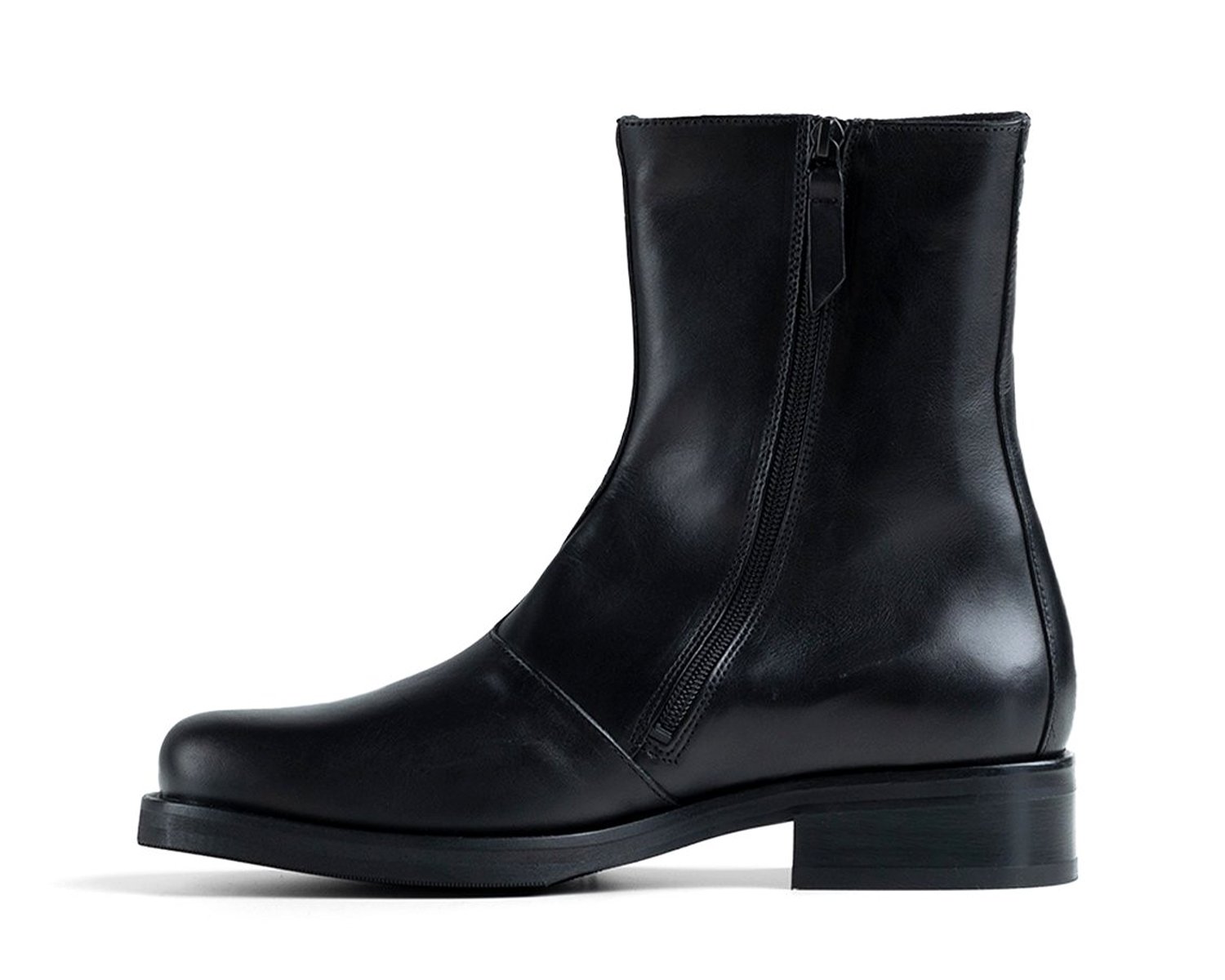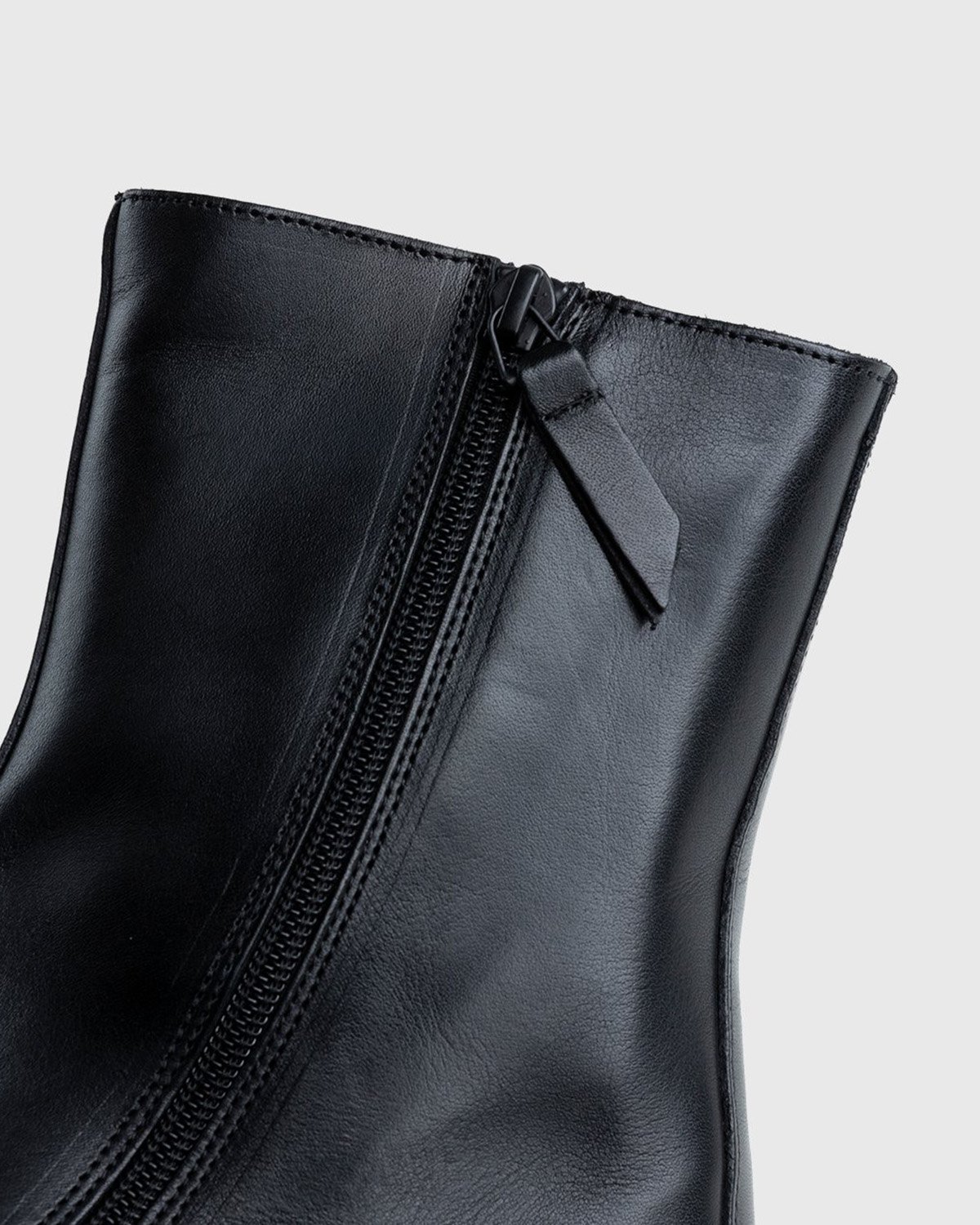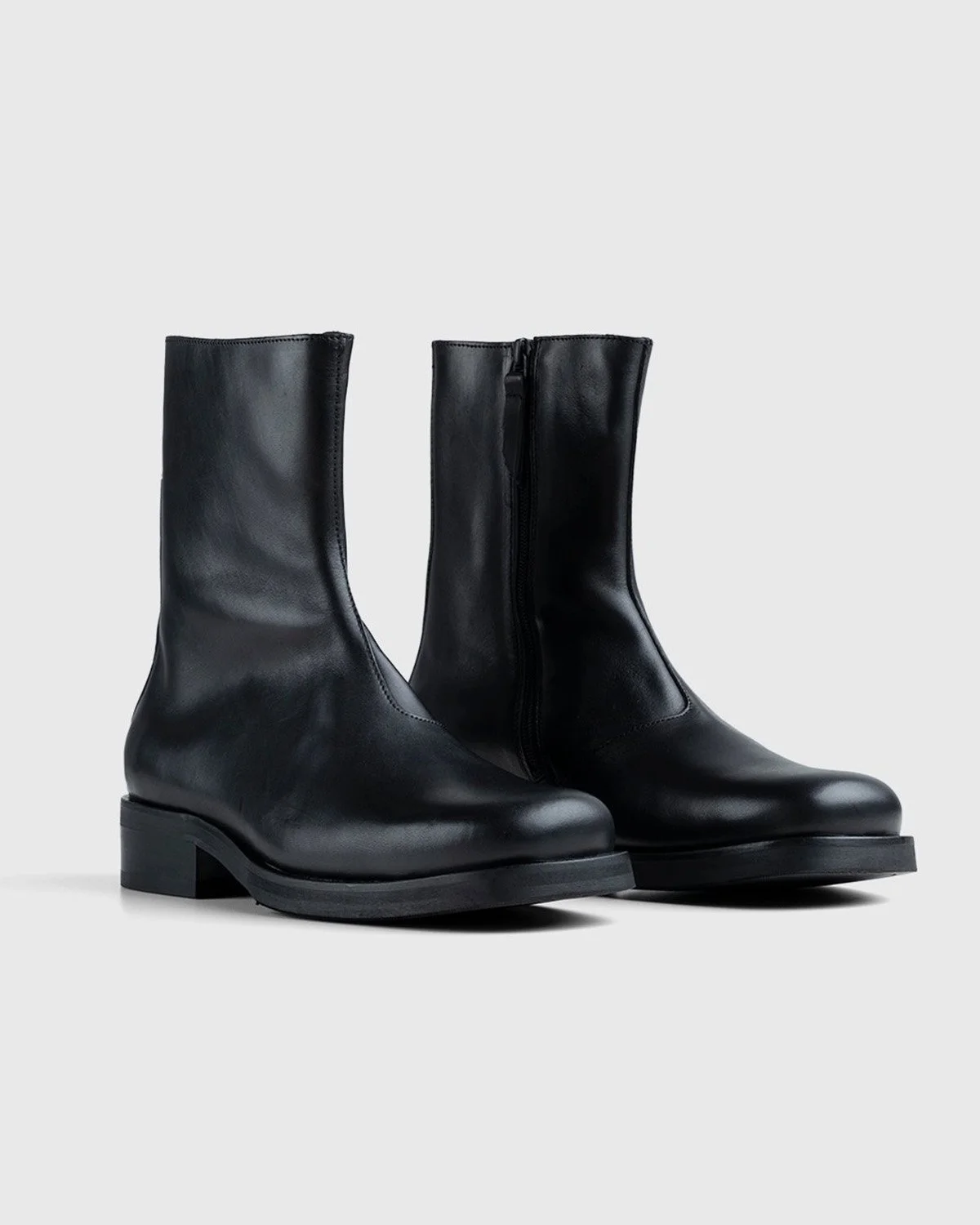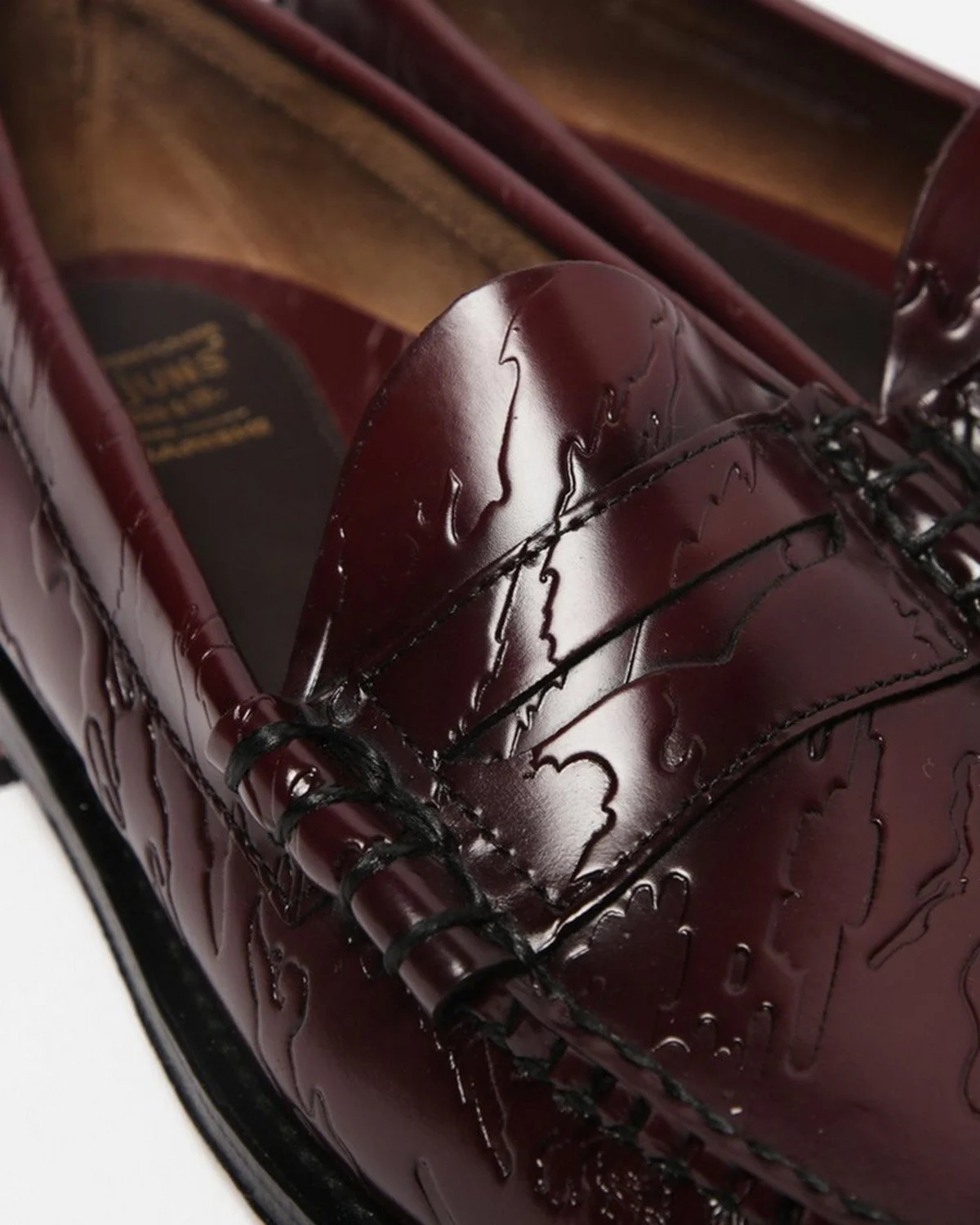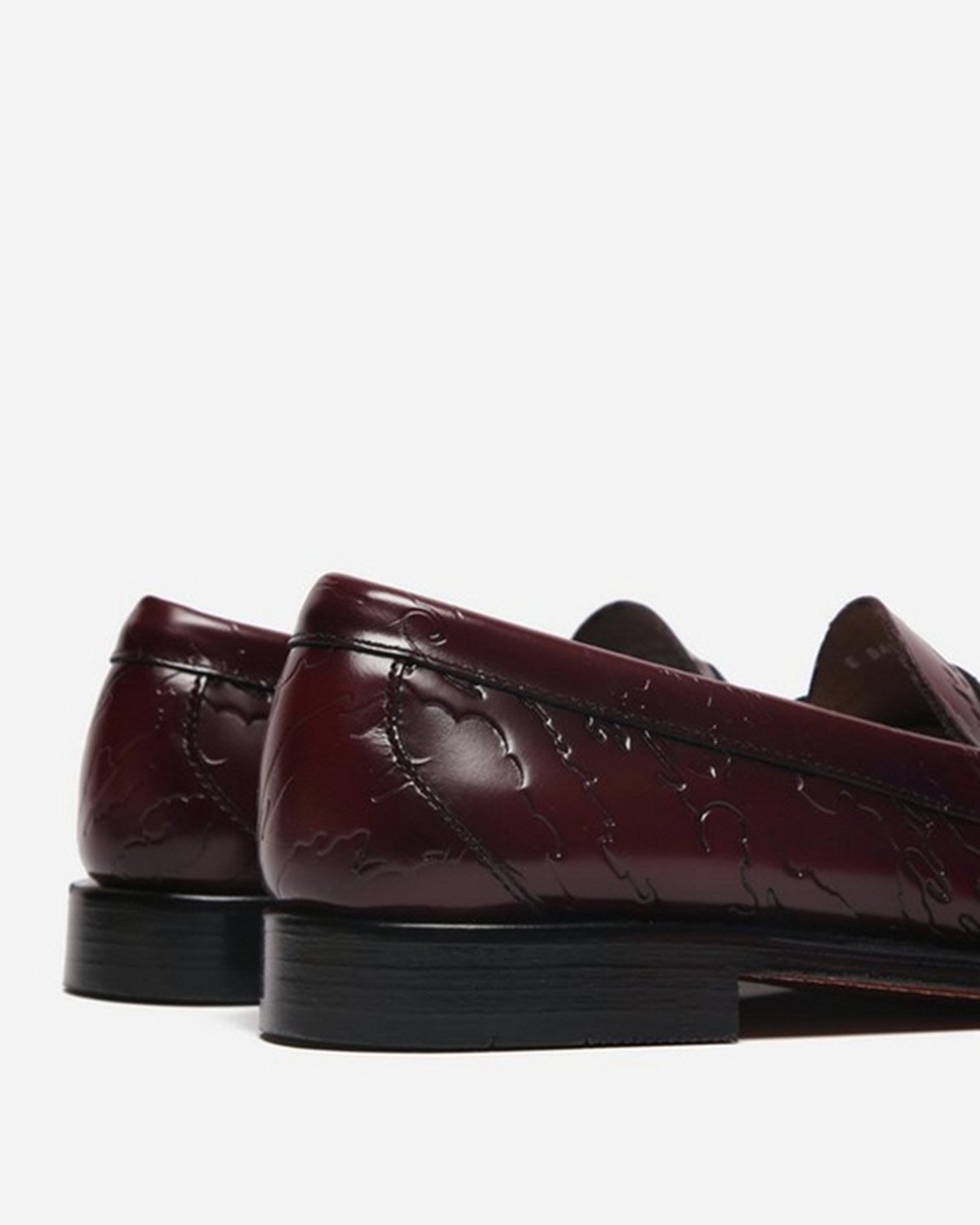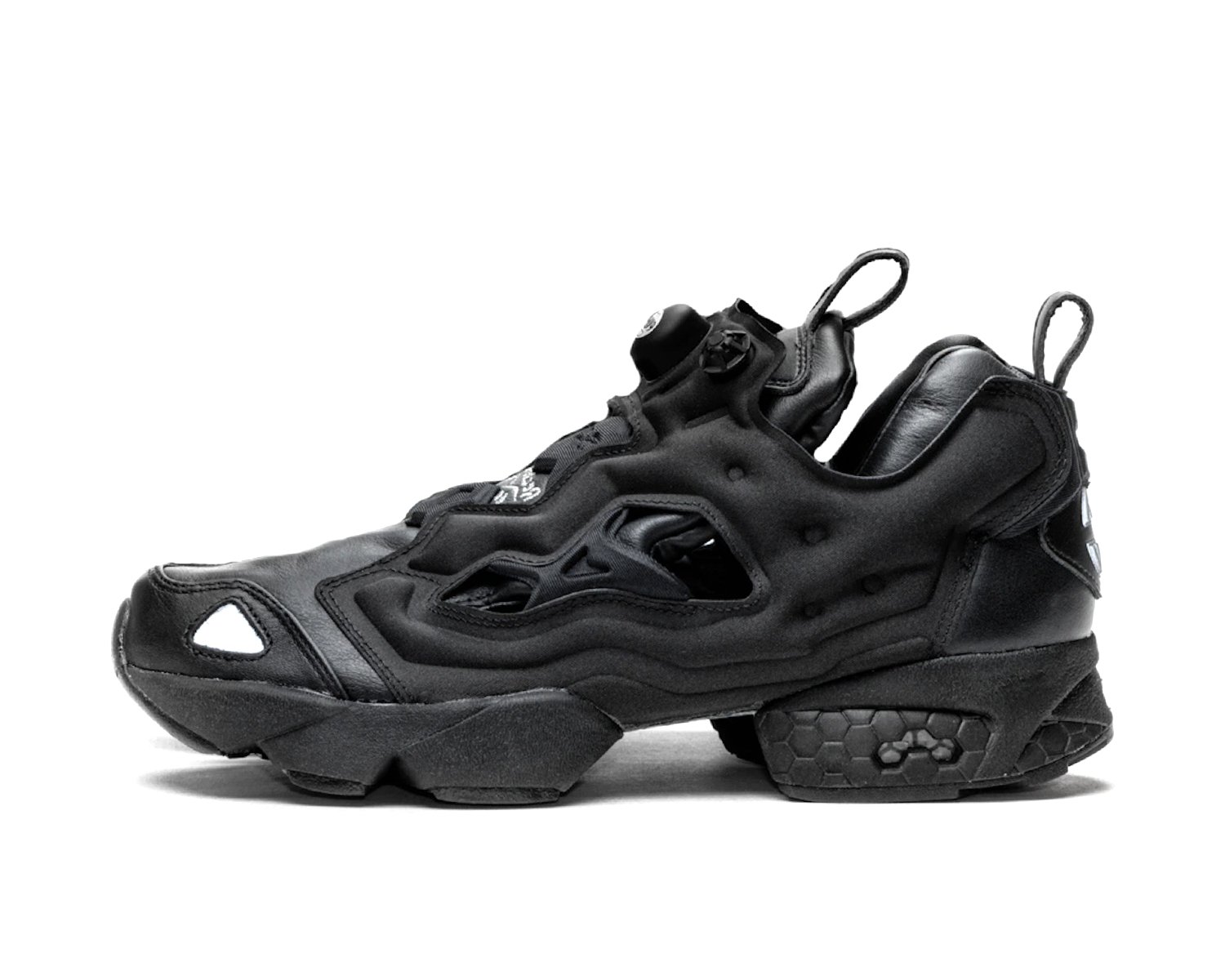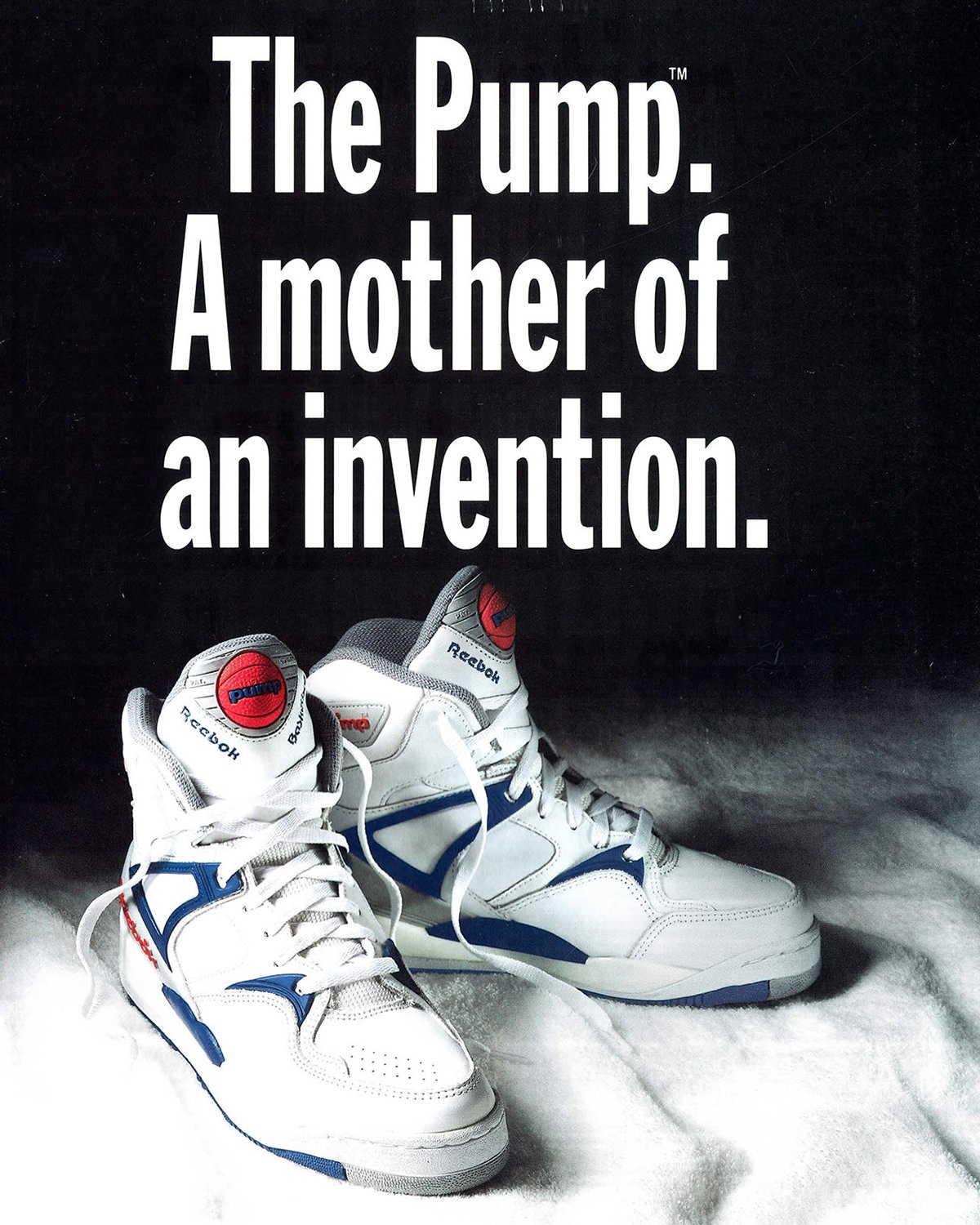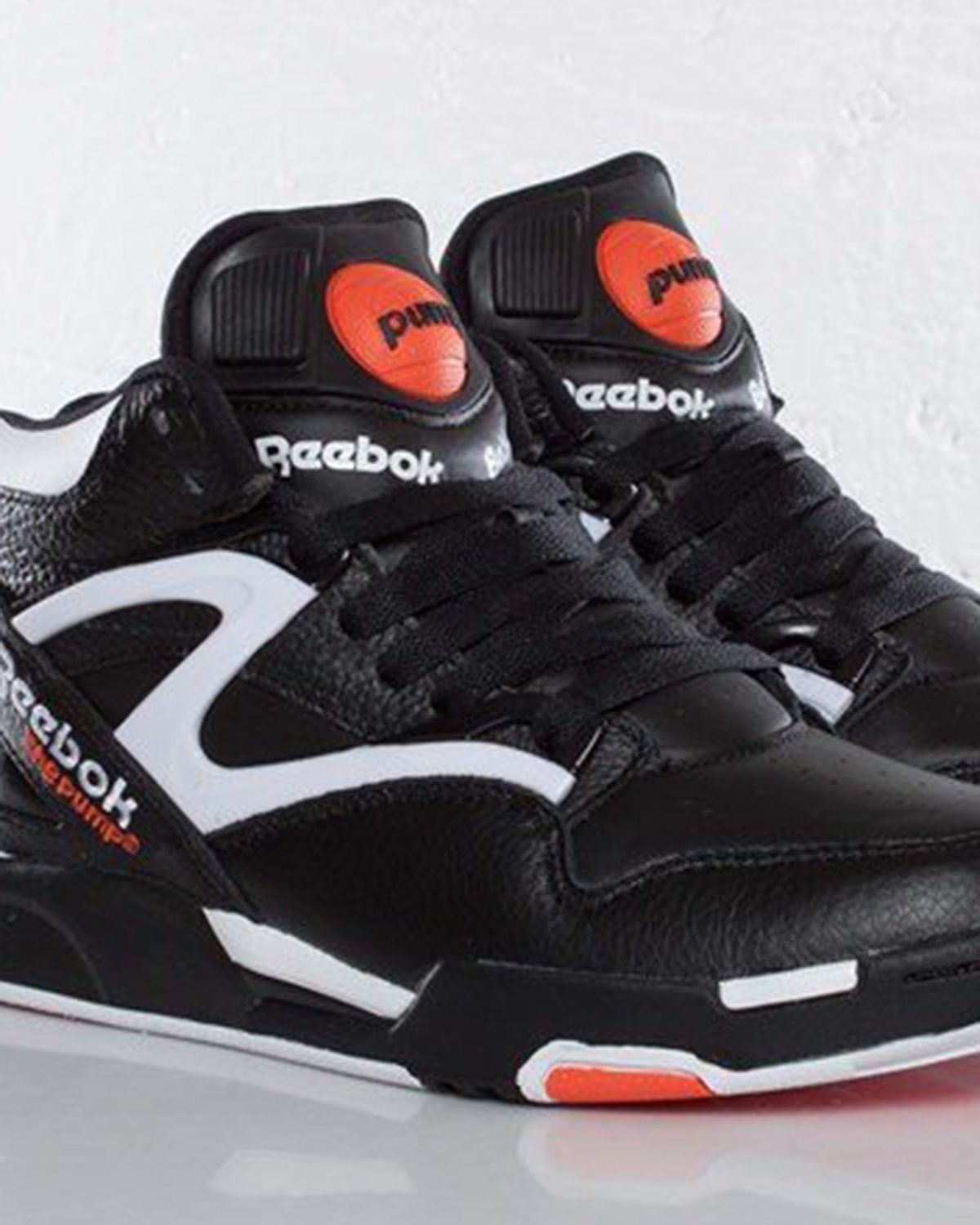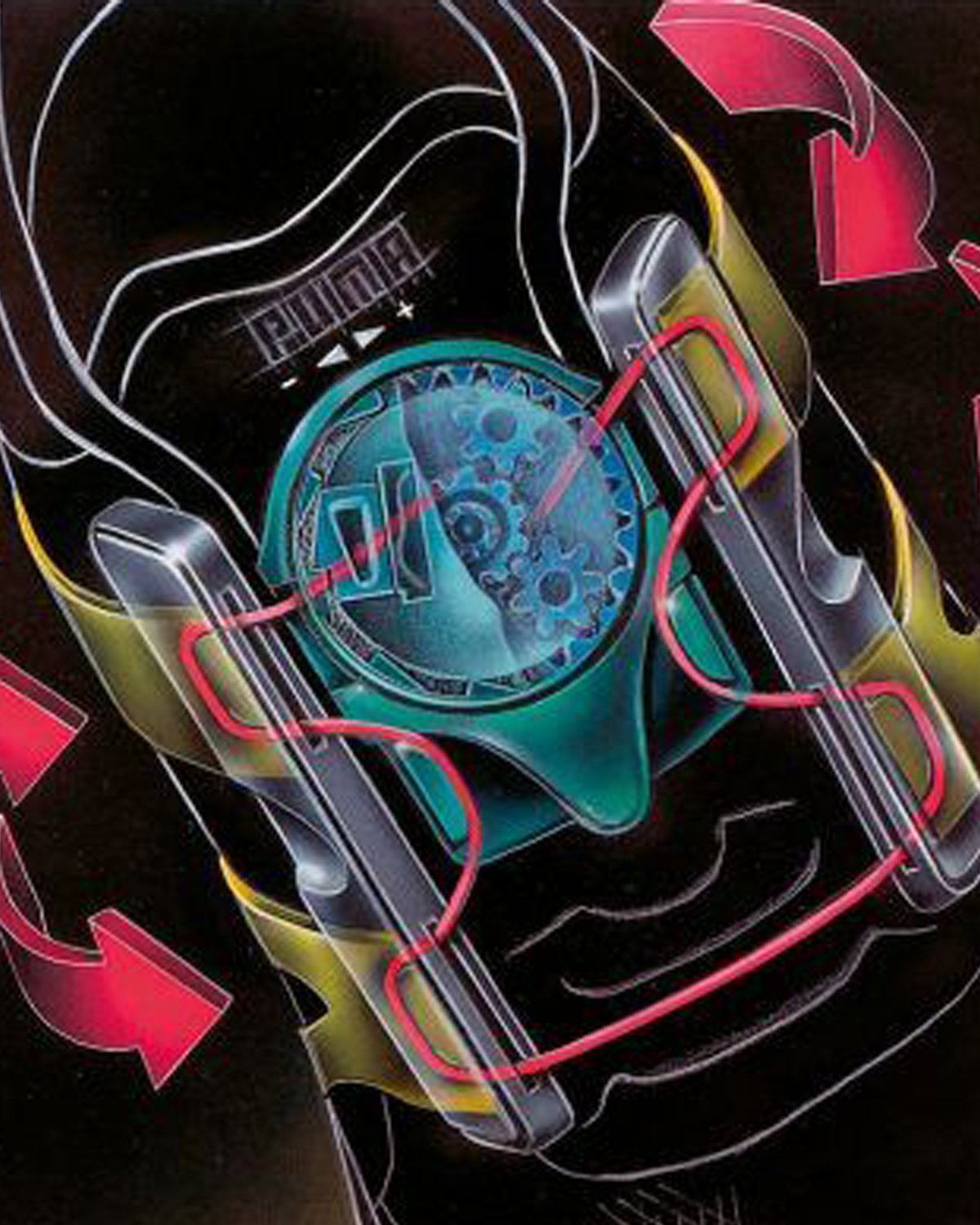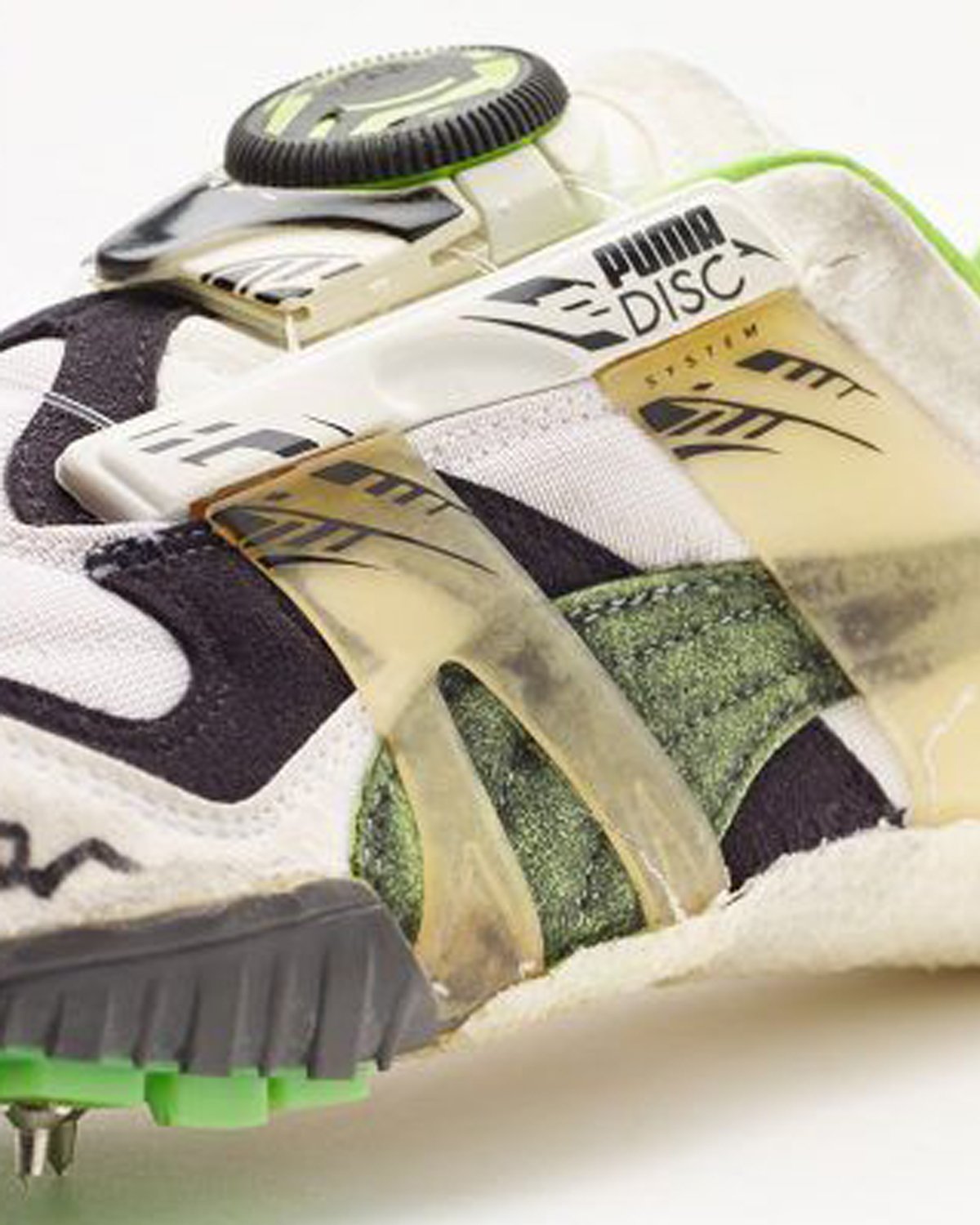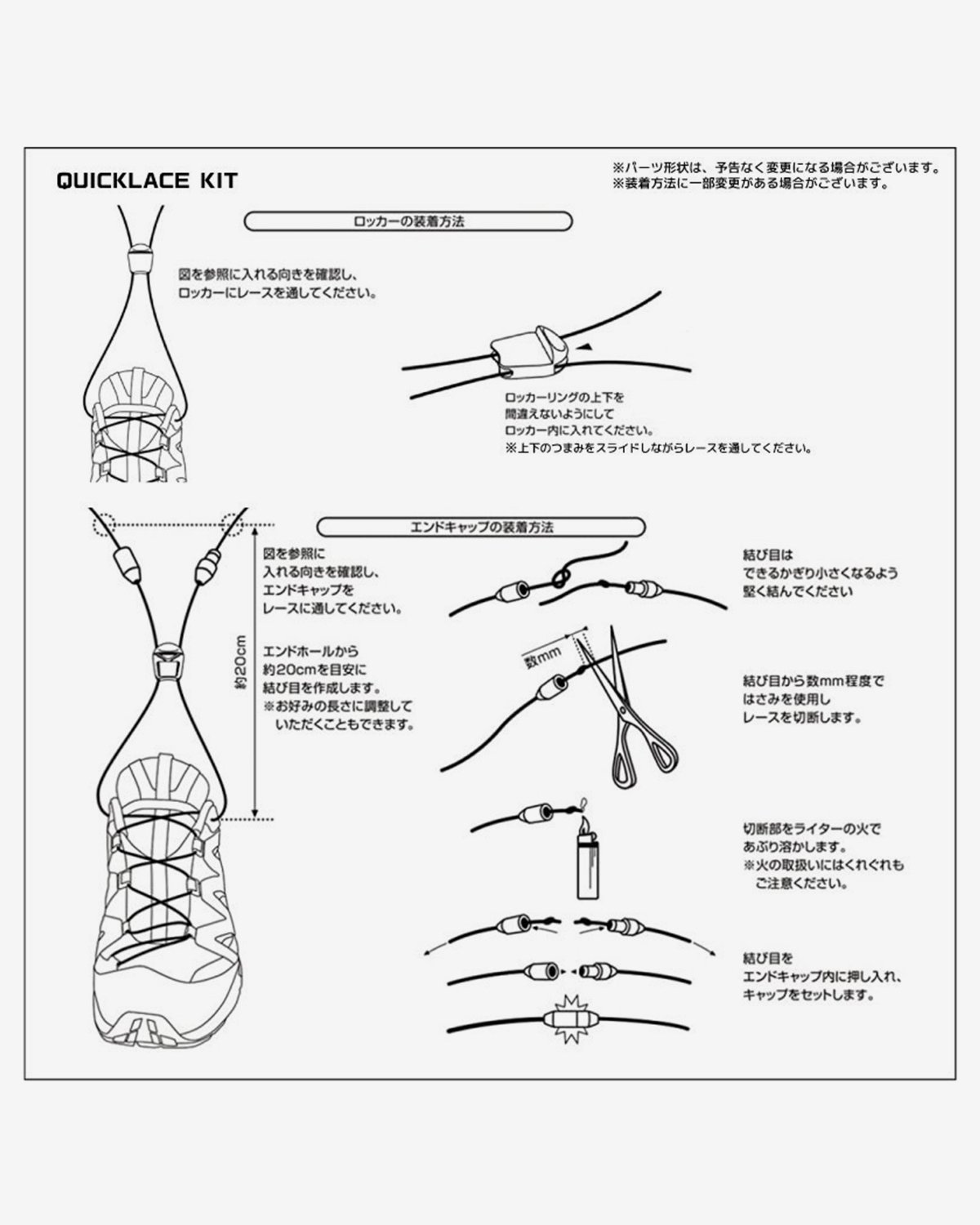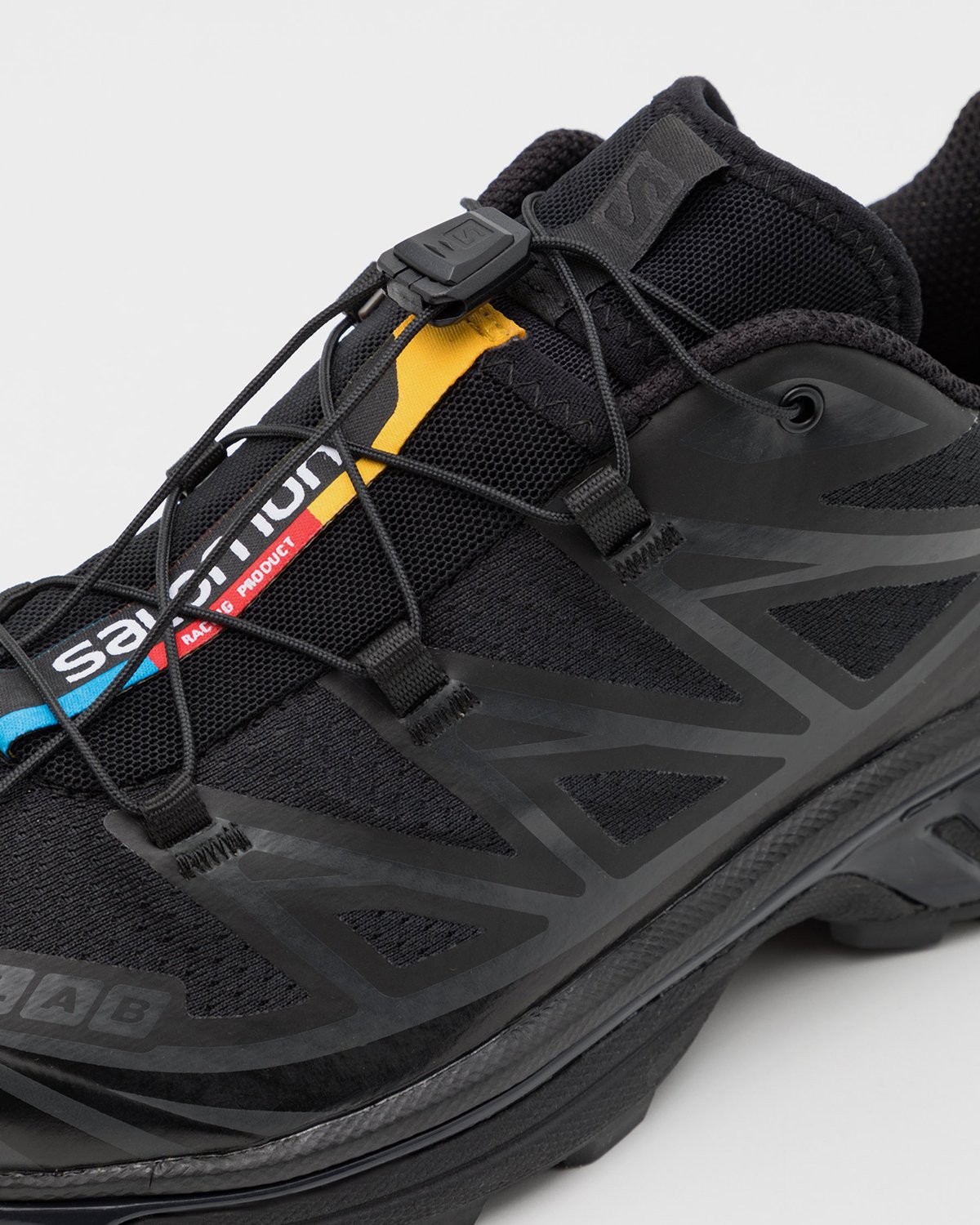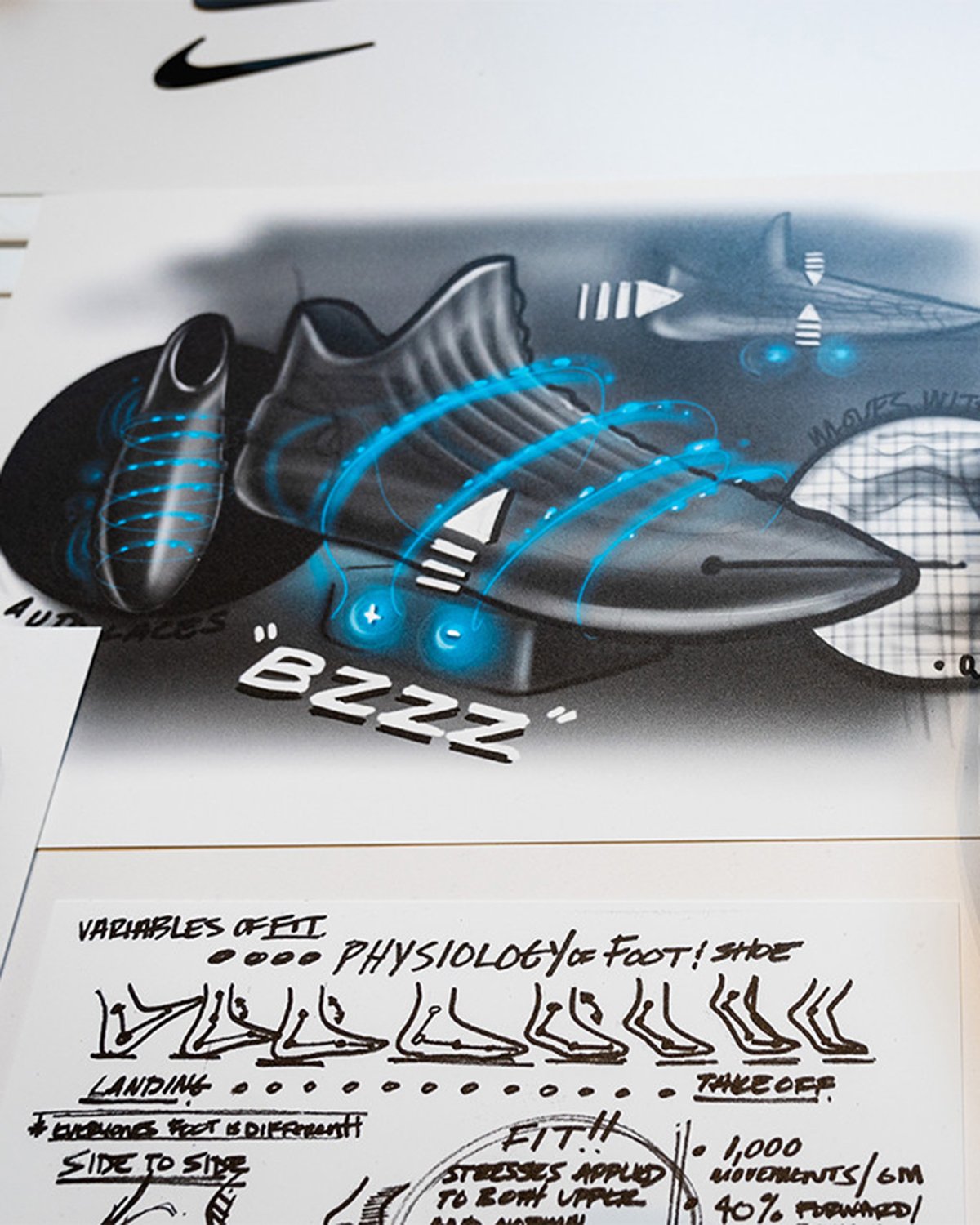Sole Systems 004: Fastenings
Ten Methods of Fastening
In the fourth instalment of our Sole Systems series, we examine the different fastenings that have been used to secure shoes to your feet. For many of us, learning to tie shoelaces was a rite of passage during childhood, finding a little more independence and making the first big step beyond the world of velcro and slip-ons. From patented pulls, pumps and discs to zippers, buckles and elastic, we traverse historical applications and future possibilities to consider a world beyond laces.
In 2015, when questioned over his tendency not to lace up his shoes, Kanye West declared the laces on the Adidas Ultraboost to be ‘after the fact’, a style cue which carried over into the way he wore his Yeezy Boost 350s. His reasoning was that the shoes themselves are composed of a form-fitting sock-like upper which negates the need for laces to be tied tight during casual use. Why then, we might ask, did the 350s have any laces at all? Is it a simple functional choice for the user, or are laces so deeply engrained in our muscular and visual memories that the absence of them feels uncomfortable and incomplete?
Shoelaces
Yeezy 350
For anyone curious about just how long shoelaces have existed in one form or another, Ötzi - Europe’s oldest known natural mummy – is over 5000 years old, and was discovered with tie-up boots featuring bearskin soles and deerskin uppers. From classic low styles such as Brogues, Derbies and Oxfords to military and hiking boots, laces have been commonplace among footwear since long before sneakers arrived on the scene. Before alternative fastening systems were thought up, the tying of ropes, vines, leaves and strips of animal skin were the only viable option for securing something in place. It’s no wonder that this tried-and-true mechanism found its way onto the earliest of human footwear.
In the contemporary field of view, laces can appear as anything from nylon ropes to waxed cotton flats to cuboid strips of treated leather. Sometimes wrapping round the back or underneath the bottom of the shoe, laces can be thread in all manner of arrangements according to the aesthetic and functional desires of both the designer and the wearer. While there may come a time where the humble shoelace is a rare sight among people, its simplicity, universality, replaceability and strength will ensure it remains a dependable solution for footwear fastening for the foreseeable future.
Buckles
1017 ALYX 9SM Buckle Chelsea Boot
Another device that goes back centuries is that of the buckle, a clasping mechanism that allows for the secure attachment of two loose ends by way of a centrally connecting and often adjustable object. Originally constructed from metals in Ancient Greece and Rome, buckles became a key ornamental feature of clothing with detailed casting and embellishment. 15th century mould techniques opened buckles up to the masses, becoming available for use on belts, helmets, bags and boxes. In the present day, buckles have been found to be secure systems for seatbelts and harnesses, with internal metal locks providing a robust and durable fastening able to withstand strain in a multitude of directions. One of the key symbols of contemporary luxury fashion is the buckle championed by 1017 ALYX 9SM, and the brand’s co-founder Matthew M. Williams in his partnerships with Nike, Dior and Moncler Genius. The device has been used across belts, bags, shoes and bracelets as well as a range of clothing that signifies the industrial functionality of the designers style. Additionally used on their own version of the Chelsea Boot, the ALYX buckle sits in place of a zipper or elastic gusset to secure the boot to the wearers foot.
Elastic Gussets
Jil Sander Chelsea Boot
There are few silhouettes that manage to fuse tradition with contemporary style quite like the Chelsea Boot. Evidence strongly supports an initial invention in the middle of the nineteenth century by Queen Victoria’s bootmaker Joseph Sparkes-Hall, and the boot has been adopted by the sneaker realm unlike any other icon. Proposed as an easy-fitting solution to horse-riding boots for her majesty, the shoes depended on an elastic gusset that could be reversibly stretched without compromising its integrity. In modern times this is easily achievable by way of Nylon or Elastane but over a century ago there was only one method that allowed for such temporary movement.
The creation of vulcanized rubber by Charles Goodyear in 1844 is one that transformed manufacturing forever, and its effect on footwear production continues to be widely felt. The combination of heat treatment and added sulphur ensures that vulcanized rubber is stronger, harder and more elastic than its untreated counterpart. The elastic gusset is the only vital signature of the Chelsea boot model, and one that remains a practical solution for the removal of high-topped footwear. Sneaker-leaning versions have grown in popularity in recent years, with casual outsole units and wrapped midsoles bringing current design to a classic silhouette.
Zippers
Our Legacy Camion Boots
Originally dubbed ‘clasp-lockers’, the zipper is one of today’s most common forms of fastenings found across all possible departments of shoes, apparel and accessories. The base mechanism of interlocking teeth are forced together with the help of a slider to create an arrangement that is extremely resistance to stress and force. In the late nineteenth century the zipper was designed as a fastener for shoes, but didn’t take off until proposed again in 1917 for use on tobacco pouches and other leather goods. The first use on clothing was to replace the fly buttons on pairs of trousers and the zipper went on to become a staple trim in fashion construction. For footwear, zippers are often – but not exclusively – used in high top shoes and boots as an alternative to elastic or laces. As a detail featured in Our Legacy’s Camion Boots and Raf Simons’ Cylon Boots, a zipper is used on the rear or side panel as a means of securing the collar above the ankle once your foot is comfortably within the shoe.
Slip-on
Penny Loafers & Vans
Aside from the aforementioned art of tying laces, the most rudimentary form of fastening is surely to have no kind of fastening at all. Slip-on shoes do not come without their limitation however, and the ability for them to wrap comfortably around the foot often means making compromises elsewhere on the shoe. Loafers – the iconic smart slip-on shape – are thought to have been invented in the late 1920s both in the UK as the Wildsmith Loafer and around the same time in Norway as the Aurland. The Aurland was conceived as a low profile laceless version of the Native American moccasin and later went on the become the Penny Loafer, reaching all four corners of the globe.
Initially named as the Style #98, Vans’ now insanely popular slip-on model was first made available for purchase back in 1977. The appeal of the silhouette is undoubtedly its simplicity, with many features adopted from the Style #95 (now Era) such as the padded collar and reinforced midsole. The history of Vans is uniquely tied with that of skateboarding culture, and the Slip-on is no different. The checkerboard colourway that is now the shape’s most synonymous, drew direct inspiration from skaters colouring in their own shoes with the hallmark pattern. The basic shape of the slip-on sneaker has been copied by everyone from Tom Ford and Celine to Converse and Common Projects, and while Vans’ version remains the most archetypal, plenty more iterations will surely follow in future.
Velcro
Nike Air Yeezy 1
The fastening system that has since become the toddler’s favourite has humble beginnings in 1940s Switzerland. Taking inspiration from the hook-and-loop mechanism applied by species throughout the plant kingdom, George de Mestral found Nylon to be the most appropriate material for the connecting method and proceeded to patent the idea throughout Europe and North America. The utilitarian use of Velcro fuelled its popularity among outdoor sportspeople and astronauts alike with its distinct advantages while wearing thick protective gloves and other bulky clothing. In the footwear realm, Velcro is nowhere more prominent than on the Nike Flystepper introduced in 2014. A stripped-back high-top silhouette, the Flystepper takes design cues from the NSW Skystepper, Zoom 2K3 and Air Yeezy 1 to create a sculptural and modern shape with perforated upper, padded ankle support and dual Velcro straps across the bridge.
Pump
Reebok Instapump Fury
Written into the history books in 1994 as the Instapump Fury made its debut, Reebok’s Pump technology made a first appearance five years prior in the simply titled ‘Reebok Pump’. As the first shoe to incorporate an internal inflation mechanism, the Pump was the result of a partnership with industrial company Design Continuum and began to infiltrate the basketball industry with its clean high-top shape and distinctive fastening method. The Instapump Fury was then allowed to showcase the technology in all its glory, with clean cut panelling that showed both the negative space of cut outs in the upper as well as the definition of the channels which could be inflated when desired.
Disc
Puma
1991 brought around Puma’s own innovative fastening technology in the form of Disc. As an answer to Nike’s Air and Reebok’s Pump systems, the Puma Disc allowed the user to tighten the fit by rotating the disc closure unit located on the tongue of the shoe. The rotating action caused small cogs to turn within the unit to pull in the upper of the shoe and bring it closer to the bridge of the foot, securing it in place and restricting unwanted ankle movement. While pitched as a track shoe for its initial release, the silhouette was a little on the heavy side and failed to become the athletes footwear of choice. Despite this, the Puma Disc took a secure spot among the casual trainer market and with a little help from Ronnie Fieg in 2012, continues to be a strong member of the brand’s unique offerings. The Disc technology has even found its way onto the Bolt evoSPEED, a pair of sprinting spikes designed and used by the world’s fastest man.
Quicklace
Salomon
With the idyllic city of Annecy as its birthplace, Salomon began its life as a small skiing workshop that has gone on to become a global heavyweight of outdoor sporting equipment. The brand have has a patented lacing system for more than a decade, aptly titled Quicklace. The arrangement can be found on a number of their shoes on the market today including the Speedcross 4 and the XT-6 as well as collaborative efforts with and Wander, 11 by Boris Bidjan Saberi and Comme des Garcons.
Equipped with an easy-to-use toggle and elasticated pocket at the top of the tongue, the Quicklace system allows the user to tighten and loosen the shoe with minimal effort and avoids any issues that arise with trailing laces. This is particularly important when outdoor activities may require the haste of putting on and taking off shoes, but also provides a simple solution for casual wearers when going about their daily routines. A practical device has evolved into a signature brand reference point that is now a marker of quality. The company also have Quicklace replacement kits on sale directly, which you could in theory utilise on a rival brand’s shoes.
Automation
Nike Adapt
If you’re after a taste of the future of laces, then Nike’s E.A.R.L (Electronic Adaptive Reactive Lacing) is probably the best indication yet. The story of the Adapt line begins with the second instalment of the cult film trilogy Back to the Future, where a futuristic sneaker called the Nike Air Mag appears in a hypothetical alternate 2015. With light-up side panels and self-fastening laces, the fictional high-top captured the hearts and minds of viewers, leading to a steadily growing campaign for a functional realisation of the shoes.
After an initial display release in 2011, Tinker Hatfield developed the E.A.R.L. technology - with the adaptive needs of basketball players in mind - before the brand released a self-lacing version of the Air Mag in 2016. After following this up with the first commercially available shoe of its kind- the HyperAdapt 1.0 - the Adapt line has gradually expanded to include the Adapt BB, Adapt Auto Max and Adapt Huarache. With tightness and lighting changed within a Bluetooth-controlled app, wireless charging is made possible by way of placement on an accompanying mat. As with all new technologies, the offerings so far have been expensive to buy and take a lot of getting used to. The future is sure to make the adaptive lacing category both cheaper and more competitive, driving down prices and breaking the barriers to entry for the everyday consumer.
Words by Rob Hallett



